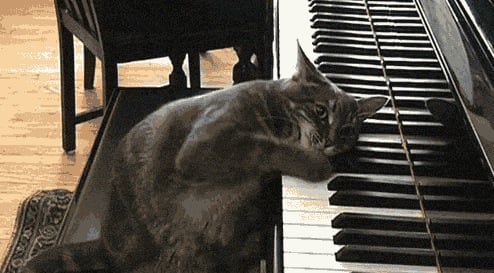
An Animal Planet segment ponders how and why this cat seems to be playing the piano. Animal behaviorist and UC Davis alumna Dr. Sophia Lin says that cats can hear and understand different tones played on instruments such as the piano. Additionally these animals are born imitators and so this cat could very well be trying to communicate to her piano teacher owner.
Sophia researches animal behavior as a way for humans to better understand their pets:
“Pets don’t understand spoken language, they rely on body language plus desired or undesired consequences in order to learn. This means that humans must be aware of their movement and actions because every move they make while interacting with the pet influences the animal’s behavior and perception of them.”

 UC Davis researchers go into rattlesnake country to study the interaction between snakes and squirrels. The snakes are real, but the squirrel is a robot.
UC Davis researchers go into rattlesnake country to study the interaction between snakes and squirrels. The snakes are real, but the squirrel is a robot.